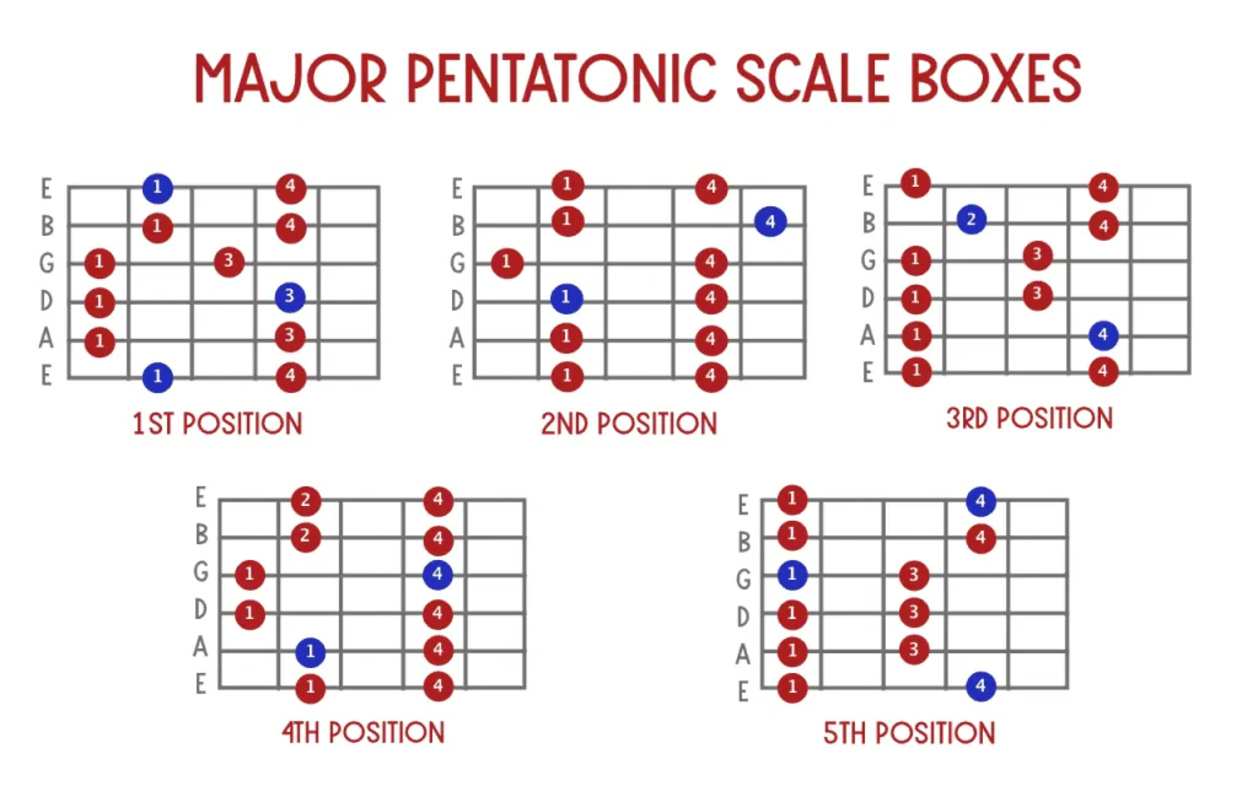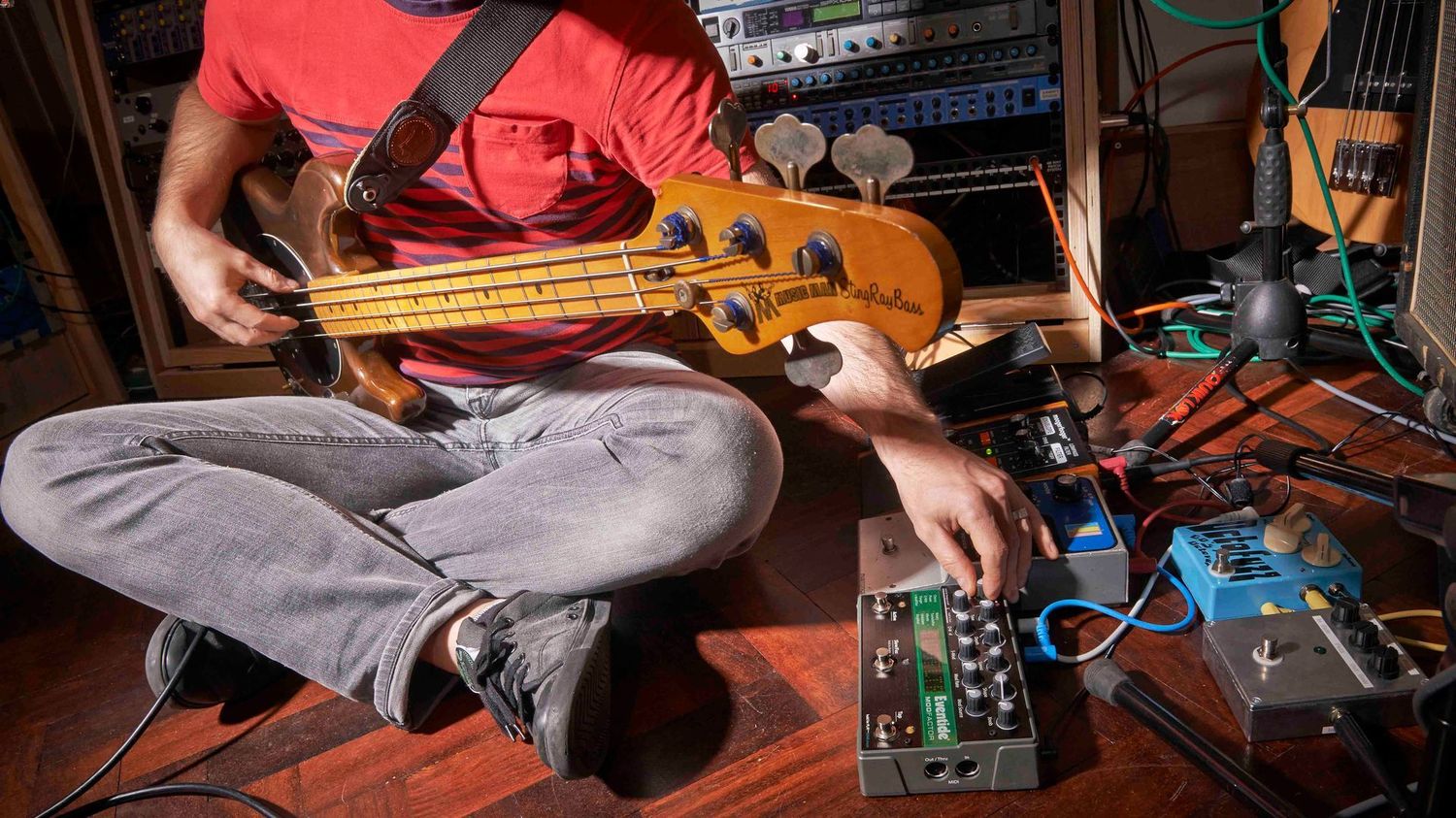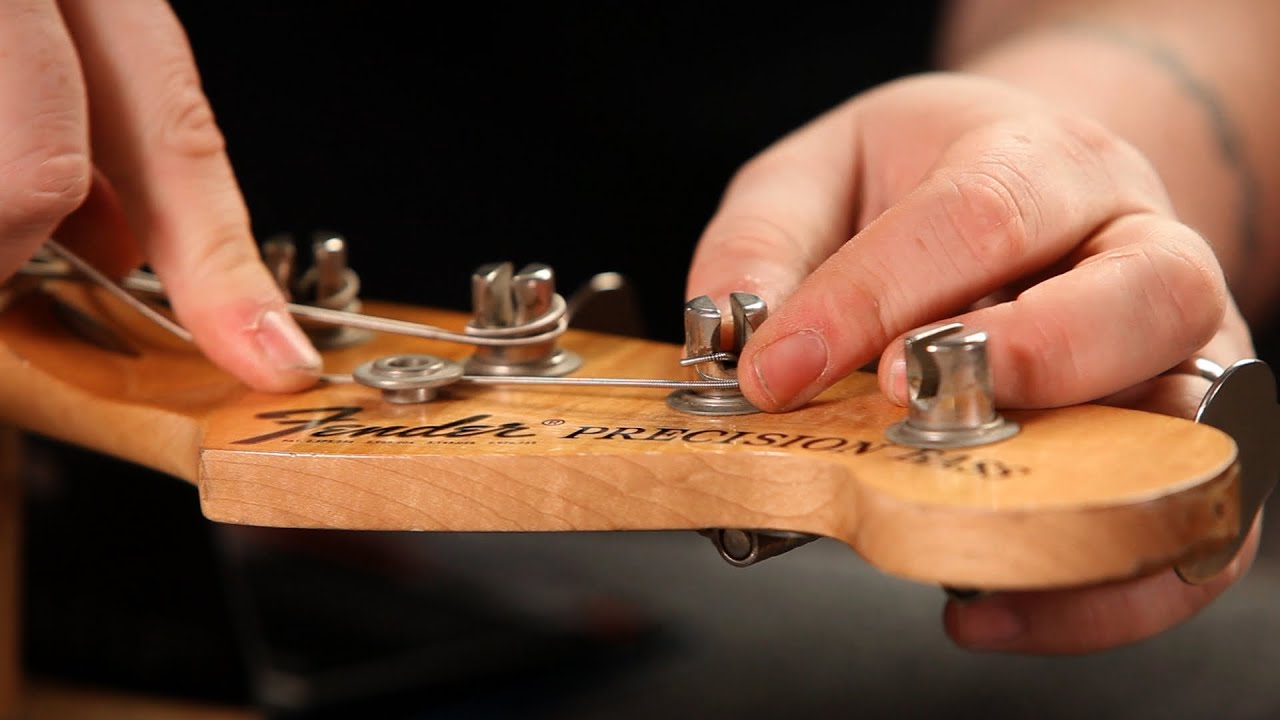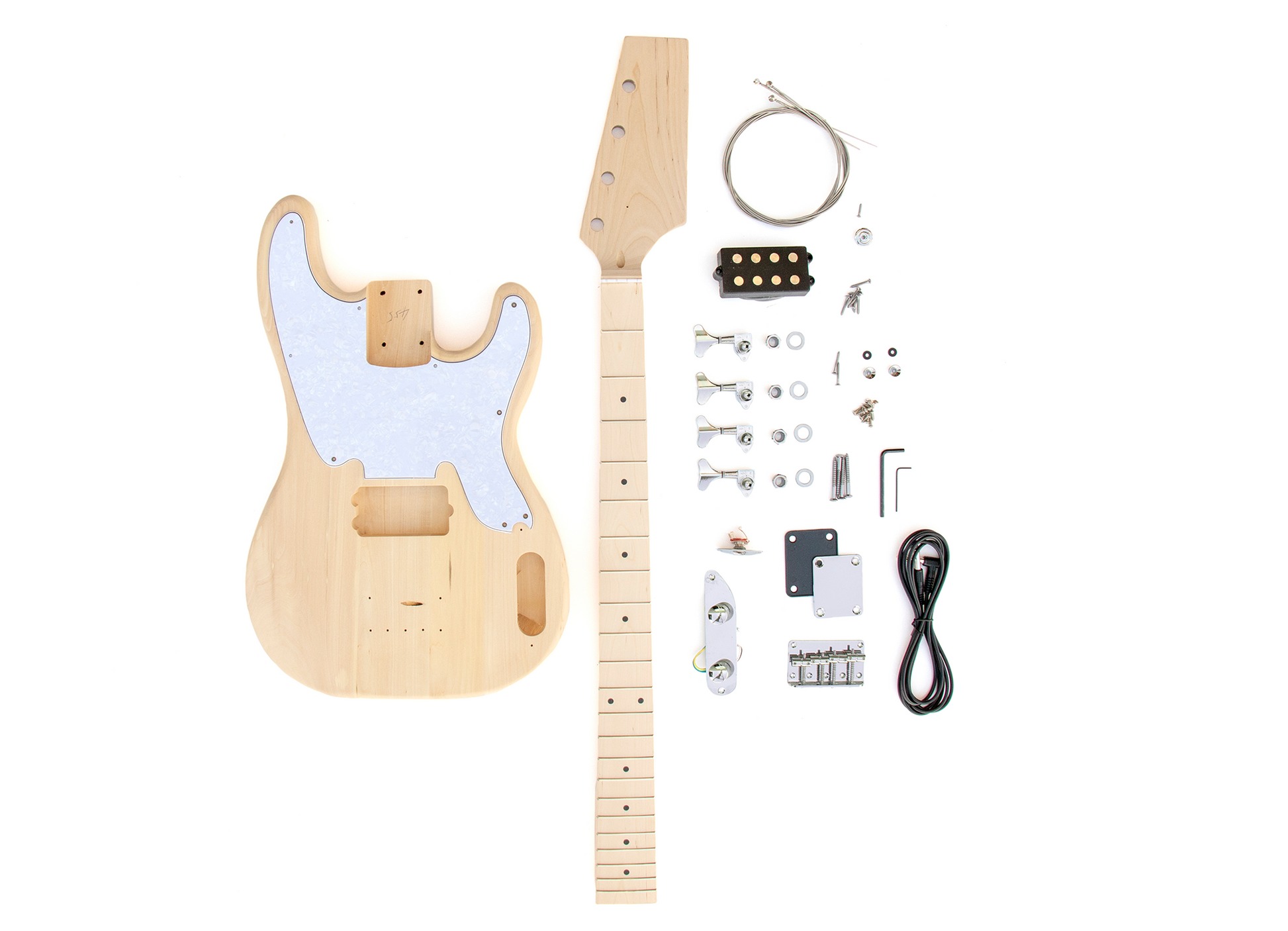Home>Instruments>Bass>How To Measure Bass Guitar Scale Length


Bass
How To Measure Bass Guitar Scale Length
Modified: February 15, 2024
Learn how to measure the scale length of a bass guitar accurately. Discover essential techniques and tools for proper bass setup.
(Many of the links in this article redirect to a specific reviewed product. Your purchase of these products through affiliate links helps to generate commission for AudioLover.com, at no extra cost. Learn more)
Table of Contents
- Introduction
- What is Bass Guitar Scale Length?
- Why is Measuring Bass Guitar Scale Length Important?
- Tools and Materials Needed for Measuring Bass Guitar Scale Length
- Step-by-Step Guide on How to Measure Bass Guitar Scale Length
- Common Mistakes to Avoid When Measuring Bass Guitar Scale Length
- Tips for Accurate Bass Guitar Scale Length Measurement
- Conclusion
Introduction
Welcome to the world of bass guitars, where the deep and resonant tones provide the foundation for any musical composition. As an aspiring bass player or a seasoned pro, understanding the intricacies of your instrument is crucial to unlocking its full potential. One such important aspect is the measurement of the bass guitar scale length.
Bass guitar scale length refers to the distance between the nut (the small piece near the headstock where the strings start) and the bridge (the piece that holds the strings near the body of the guitar). It plays a significant role in determining the overall feel, playability, and tone of the instrument.
Measuring the bass guitar scale length accurately is essential for various reasons. It helps in achieving proper intonation, ensuring that each note rings true and in tune throughout the fretboard. Additionally, it helps in selecting the right set of strings and determining the correct placement of the bridge. Whether you are setting up a new bass guitar or making adjustments to an existing one, knowing how to measure the scale length is a fundamental skill for any bassist.
In this article, we will guide you through the process of measuring the bass guitar scale length step by step. Additionally, we will discuss the tools and materials required, common mistakes to avoid, and provide some tips for accurate measurement. So, grab your bass and let’s dive into the world of scale length measurement!
What is Bass Guitar Scale Length?
Bass guitar scale length refers to the distance between the nut and the bridge of the instrument. It is typically measured in inches or millimeters and is a key factor in determining the overall feel and playability of the bass.
The scale length directly affects the tension of the strings and the distance between the frets. Longer scale lengths tend to have a higher tension and wider spacing between frets, while shorter scale lengths have lower tension and narrower spacing. This can have a significant impact on how easy or difficult it is to play certain techniques, such as stretches and fast passages.
The most common scale lengths for bass guitars are 34 inches and 35 inches, although there are variations available. Short scale basses, typically measuring around 30 inches, are also popular due to their smaller size and ease of playability. Some basses, often referred to as “extended scale” or “multiscale” instruments, have a combination of different scale lengths for each string to optimize string tension and intonation.
The scale length of a bass guitar also affects its tone. Longer scale lengths tend to produce a brighter, punchier sound with more sustain, while shorter scale lengths result in a warmer, rounder tone. The choice of scale length depends on personal preference and the desired sound for a particular musical style.
When shopping for a bass guitar, pay close attention to the scale length as it can greatly impact your playing experience. Experimenting with different scale lengths can help you discover the one that suits your playing style and musical genre the best.
Why is Measuring Bass Guitar Scale Length Important?
Measuring the bass guitar scale length is of utmost importance for several reasons. It directly affects the playability, intonation, and overall performance of the instrument. Here are a few key reasons why measuring the scale length is crucial:
1. Intonation: Proper intonation ensures that each note played on the bass guitar is in tune throughout the fretboard. An accurately measured scale length helps to position the frets in the correct locations, ensuring that the instrument plays in tune across all the strings.
2. String Selection: The scale length of a bass guitar plays a significant role in determining the optimal string tension. Different scale lengths require different string gauges to achieve the desired tension and feel. By measuring the scale length, you can select the appropriate set of strings that will provide the right balance between playability and tone.
3. Bridge Placement: The measurement of the scale length also determines the correct placement of the bridge on the bass guitar. Setting the bridge at the correct distance from the nut ensures accurate intonation and even string lengths. This not only affects the sound but also makes it easier to play in tune across all positions on the fretboard.
4. Playability: The scale length of a bass guitar impacts the spacing between the frets. A shorter scale length typically means narrower spacing, making it easier for players with smaller hands or those who prefer a more compact instrument. On the other hand, a longer scale length offers wider spacing, which can be advantageous for players who require more room for complex fingerings or have larger hands.
5. Tone: The scale length of a bass guitar also influences its tone. Longer scale lengths tend to produce a brighter and more focused sound, while shorter scale lengths offer a warmer and rounder tone. The choice of scale length depends on personal preference and the desired sound for a specific musical genre or playing style.
Overall, measuring the bass guitar scale length ensures proper intonation, allows for the selection of suitable strings, determines accurate bridge placement, and enhances playability and tone. It is an essential step in properly setting up and maintaining your bass guitar for optimal performance and enjoyment.
Tools and Materials Needed for Measuring Bass Guitar Scale Length
Before you begin measuring the scale length of your bass guitar, it’s important to gather the necessary tools and materials. Here’s a list of items you’ll need:
1. Measuring Tape or Scale: A measuring tape or scale is essential for accurately measuring the distance between the nut and the bridge. Make sure it is long enough to span the entire length of the bass guitar.
2. Capo: A capo is a device used to clamp down the strings at a specific fret, effectively raising the pitch of the open strings. It is useful during the measurement process to ensure that the strings are under tension.
3. Tuner: A reliable tuner is necessary to ensure that each string is properly tuned. This is crucial for accurate intonation when measuring the scale length.
4. Pencil or Marker: You’ll need a pencil or marker to mark the reference points on the bass guitar, such as the nut and bridge positions. This will help you measure accurately without losing your place.
5. Clean Cloth: It’s always a good idea to have a clean cloth on hand to wipe down the bass guitar, as well as any sweat or dirt that may affect the measurement process.
6. Optional: String Spacing Ruler: If you want precise string spacing measurements, a string spacing ruler can be a helpful tool. This ruler typically has slots for each string, allowing you to measure the distance between them accurately.
These tools and materials will ensure that your measurement process goes smoothly and accurately. It’s important to have the right tools at hand to achieve precise results and maintain the integrity of your bass guitar. Now that you have everything ready, let’s move on to the step-by-step guide on how to measure the bass guitar scale length.
Step-by-Step Guide on How to Measure Bass Guitar Scale Length
Measuring the scale length of your bass guitar requires careful attention to detail and accuracy. Follow this step-by-step guide to ensure you get precise measurements:
1. Tune your bass guitar: Start by tuning your bass guitar using a reliable tuner. Ensure that all the strings are properly tuned to their correct pitches.
2. Place the capo: Position the capo on the first fret of your bass guitar. This will create tension on the strings and simulate the pressure of a fretted note.
3. Measure from the capo to the 12th fret: Using a measuring tape or scale, measure the distance from the capo to the 12th fret. Place the end of the tape or scale at the edge of the capo and extend it to the center of the 12th fret.
4. Double the measurement: Once you have the measurement from the capo to the 12th fret, double it. This is because the 12th fret is usually positioned at the midpoint between the nut and the bridge.
5. Measure from the 12th fret to the saddle: Again, using the measuring tape or scale, measure the distance from the center of the 12th fret to the saddle or bridge of your bass guitar. Make sure to align the end of the tape or scale with the center of the 12th fret.
6. Add the measurements: Add the measurement from the 12th fret to the saddle to the doubled measurement from step 4. This will give you the total scale length of your bass guitar.
7. Verify the measurement: To ensure accuracy, double-check your measurement by measuring from the nut to the saddle directly. The measurement should match the total scale length you calculated in step 6.
8. Make note of the scale length: Once you have confirmed the scale length, make a note of it for future reference. This will come in handy when selecting strings or making adjustments to your bass guitar.
By following these steps, you will be able to measure the scale length of your bass guitar with precision. Remember to take your time and ensure accurate measurements, as this information will play a crucial role in optimizing the playability and intonation of your instrument.
Common Mistakes to Avoid When Measuring Bass Guitar Scale Length
Measuring the scale length of a bass guitar requires attention to detail and precision. To ensure accurate measurements, it’s important to avoid common mistakes that can lead to inaccurate results. Here are some common mistakes to avoid:
1. Inaccurate placement of the capo: Placing the capo too close to or too far away from the first fret can lead to incorrect measurements. Make sure the capo is positioned right behind the desired fret to maintain accurate tension on the strings.
2. Misalignment of the measuring tape or scale: When measuring from the capo to the 12th fret, and from the 12th fret to the saddle, it’s crucial to align the measuring tape or scale properly. Ensure that it runs straight along the centerline of the fretboard for accurate measurements.
3. Failure to double the measurement: Forgetting to double the measurement from the capo to the 12th fret can result in halving the actual scale length. Remember that the 12th fret represents the midpoint between the nut and the saddle, so the measurement needs to be multiplied by two for accuracy.
4. Inconsistent tension on the strings: It’s important to have consistent tension on the strings when measuring the scale length. Ensure that you press down on the capo firmly and evenly to maintain consistent string tension throughout the measurement process.
5. Not verifying the measurement: Neglecting to verify the measurement by measuring directly from the nut to the saddle can lead to inaccurate results. Double-checking the scale length ensures that your initial measurement was correct and eliminates any potential errors.
6. Using a worn-out or stretched measuring tape: Using a measuring tape that is worn out or stretched can introduce inaccuracies into your measurements. Make sure your measuring tape is in good condition and has not lost its integrity over time.
7. Ignoring other factors affecting playability and intonation: While measuring the scale length is important, it’s essential to consider other factors, such as the neck relief, string height, and intonation adjustments. These factors can also impact the playability and intonation of your bass guitar.
By avoiding these common mistakes, you can ensure precise measurements of the scale length of your bass guitar. Taking the time to measure accurately will greatly improve the playability and performance of your instrument.
Tips for Accurate Bass Guitar Scale Length Measurement
When measuring the scale length of your bass guitar, precision is key. Here are some helpful tips to ensure accurate measurements:
1. Use a digital tuner: Using a digital tuner will help you achieve precise tuning for each string. Ensure that each string is accurately tuned before measuring the scale length, as this affects the tension and intonation of the instrument.
2. Apply consistent pressure with the capo: When placing the capo on the first fret, apply firm and even pressure to mimic the pressure exerted when fretting a note. This helps maintain consistent tension on the strings, ensuring accurate measurements.
3. Take multiple measurements: To ensure accuracy, take multiple measurements and compare the results. This helps identify any inconsistencies or errors in your measurements and allows you to make adjustments if necessary.
4. Use a straight-edge ruler: Along with the measuring tape or scale, use a straight-edge ruler to align and verify the placement of the capo, 12th fret, and measuring points. This ensures proper alignment and improves the accuracy of your measurements.
5. Measure from the center of the frets: When measuring from the capo to the 12th fret and from the 12th fret to the saddle, place the tape or scale at the center of each fret. This provides a more precise measurement, as the center is the most accurate point of reference.
6. Check for any slippage: Ensure that the capo, measuring tape, and saddle are securely in place to prevent any slippage during the measurement process. Any movement or slippage can lead to inaccurate measurements.
7. Take caution with multi-scale instruments: If you have a bass guitar with a multi-scale design, where each string has a different scale length, take measurements for each string individually. Pay attention to the specific scale length for each string and how it affects the overall measurement.
8. Double-check the total scale length: After calculating the total scale length by adding the measurement from the 12th fret to the saddle, verify the measurement by measuring directly from the nut to the saddle. This step confirms the accuracy of your previous calculations.
Remember, accuracy is crucial when measuring bass guitar scale length. Taking your time, using the right tools, and following these tips will help you achieve precise measurements, leading to better intonation, playability, and overall performance of your bass guitar.
Conclusion
Measuring the scale length of a bass guitar is an essential task for any bassist. It allows for proper intonation, selection of the correct strings, precise bridge placement, and optimal playability. By following the step-by-step guide and avoiding common mistakes, you can ensure accurate measurements and maintain the integrity of your instrument.
Remember that the scale length directly affects the feel and tone of your bass guitar. Longer scale lengths offer more tension and wider spacing, producing a bright and punchy sound, while shorter scale lengths provide a warm and rounded tone with easier playability. Understanding your personal preferences and musical genre will help you choose the right scale length for your bass.
In addition to accurate measurements, it’s important to consider other factors that influence the playability and intonation of your bass guitar, such as neck relief, string height, and intonation adjustments. These adjustments can further enhance the overall performance and playability of your instrument.
By taking the time to measure the bass guitar scale length properly, you can optimize your playing experience, achieve accurate intonation, and unlock the full potential of your instrument. So, grab your measuring tape, capo, tuner, and other necessary tools, and start measuring the scale length of your bass guitar with confidence!











